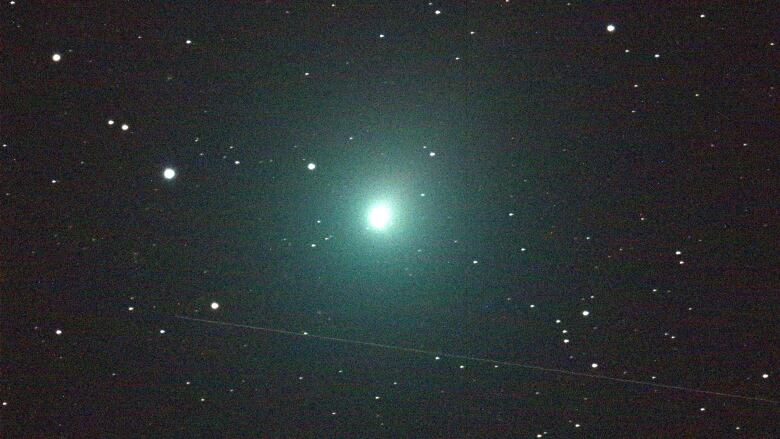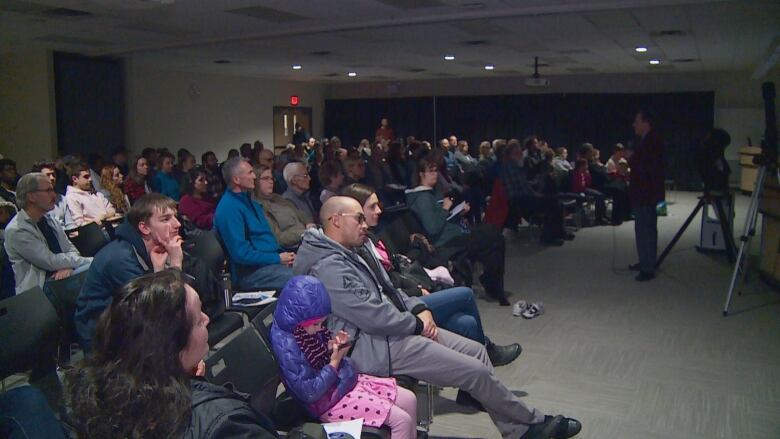Brighter than Rudolph's nose 'Christmas comet' zooms near Earth this month
It should be visible to the naked eye through late December

Santa's sleigh might be outshone in the December sky, as a comet makes its closest approach to Earth in centuries.
On Saturday night, close to 100 stargazers gathered at Ambrose University, a Christian post-secondary institution insouthwest Calgary, to catch a glimpse of comet 46P/Wirtanen(named after Carl Wirtanen who discovered it in 1948).
Some have dubbed it the"Christmas comet" as it's the brightest comet to pass Earth as the year wraps up.
"It's a messenger that's rising with the east in the night sky," said Stephen Jeans, an astronomy professor at Ambrose University. "It's a wonderful way to start the season, I think."

The comet's orbit between the Sun and Jupiter takes a relatively short5.4 years, and it's small just 1.2 kilometres across.
It makes its closest approach Sunday just 11.4 million kilometres away and won't come this close again until 2038.
"It's pretty exciting," said Jesus Salazar, an amateur astronomer."You can see it relatively regularly, but not this bright. There's often comets in the sky but only visible through bigger telescopes to be able to see it with the naked eye is not that common."
Salazar is not just an astro-photographer, but also a pastor in Calgary.
"I see beauty when I look up at the sky," he said. "To me that just reflects God's greatness."

The comet'sapproach is just four days after it reaches perihelion, the closest approach to the sun in its orbit, which creates its long tail as the ice surrounding it evaporates from the sun's heat.
"It's really cool,"saidShawna LeBlanc. "It's just amazing that it's even possible to see with a naked eye."
If you want to see the comet this month, glance up around 6:30 to 8:30 p.m., and look for a green glow along the Taurus constellation near thePleiades star cluster.
- Read more articles byCBC Calgary, like us onFacebookfor updates and subscribe to ourCBC Calgary newsletterfor the day's news at a glance
With files from Terri Trembath












_(720p).jpg)


 OFFICIAL HD MUSIC VIDEO.jpg)
.jpg)



























































































